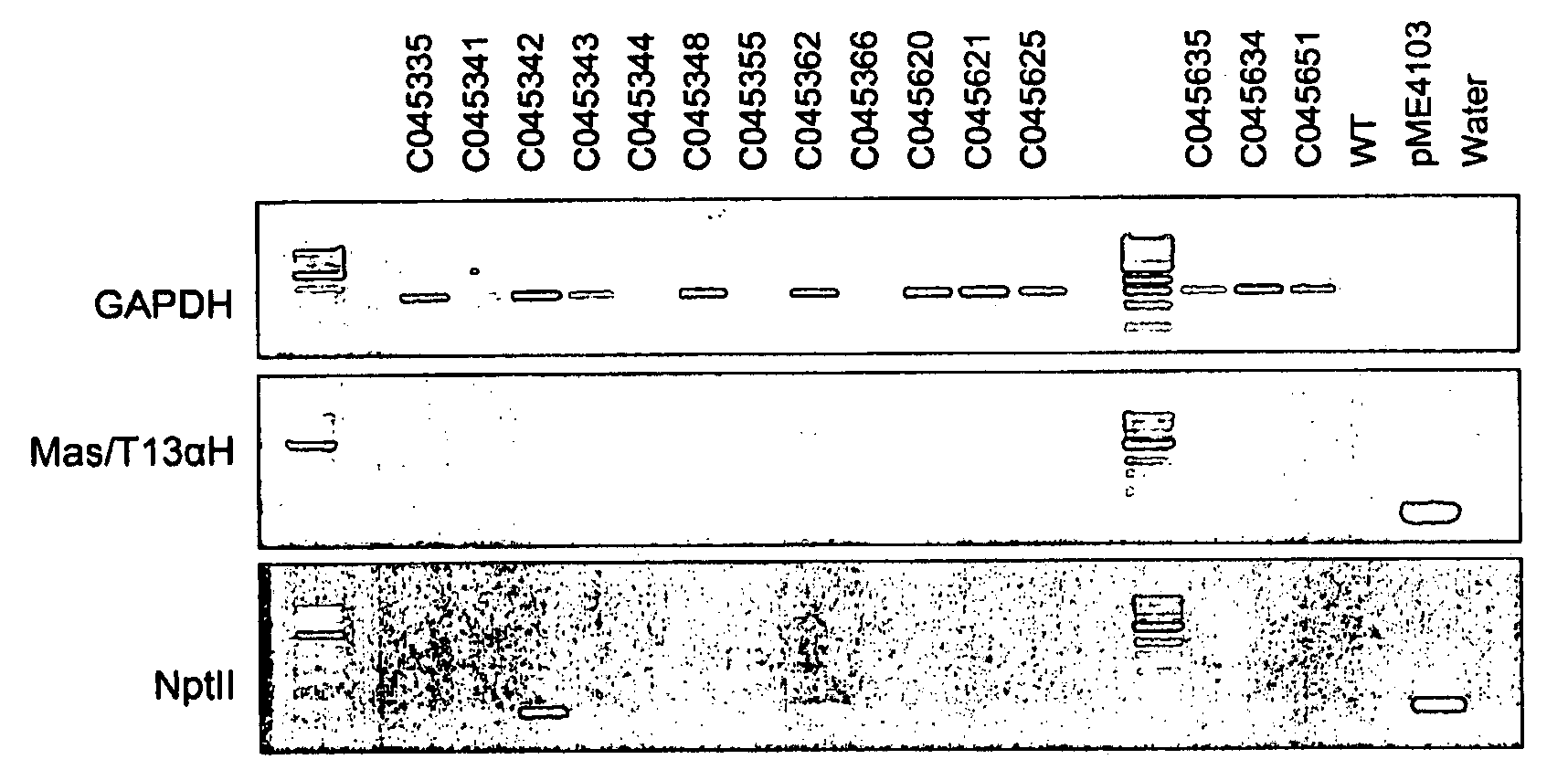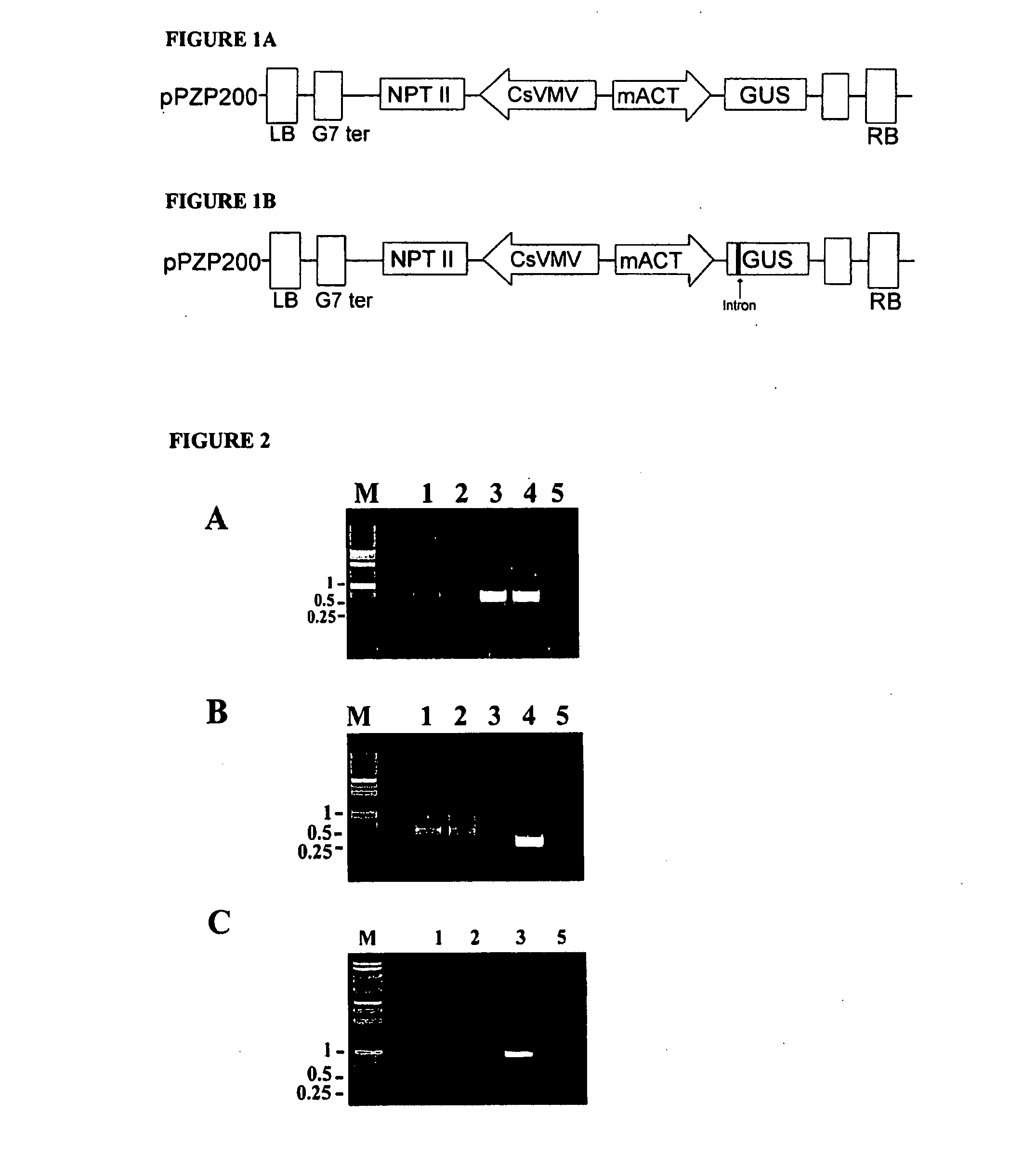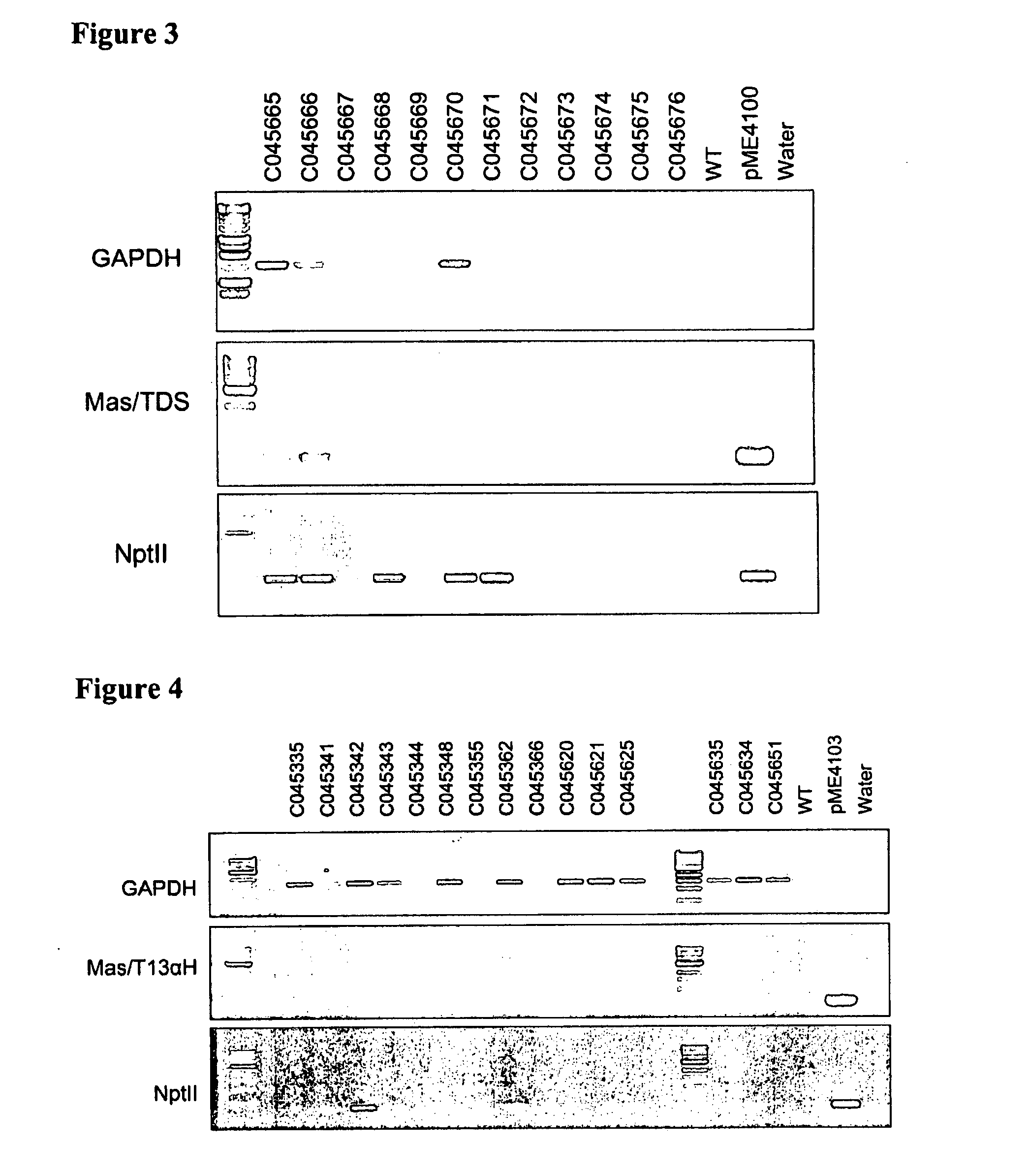Taxus Transformation Transformed Cells, and Related Compositions and Methods
a technology of transformed cells and taxus, applied in the field of plant transformation, can solve the problems of inability to achieve the effect of conventional breeding strategy for genetic improvement of i>taxus/i>, limited drug supply, and low content of paclitaxel in the bark of the tr
- Summary
- Abstract
- Description
- Claims
- Application Information
AI Technical Summary
Benefits of technology
Problems solved by technology
Method used
Image
Examples
example 1
Development of Agrobacterium tumefaciens Suspensions for Transformation
[0130]Agrobacterium tumefaciens strain EHA101 or GV3101 pMP90RK containing plasmid pAG4015 or pAG4017 were used. Plasmid pAG4015 contained antibiotic selection marker gene nptII and Gus under the transcriptional control of CsVMV and melon actin promoters respectively. The promoter:gene fusions are located between left and right borders. In the case of pAG4017, in addition to the gene elements of pAG4015 there is an intron sequence between the melon actin promoter and the Gus coding sequence. The intron is a 189 bp sequence from potato light-inducible tissue-specific ST-LS1 gene (Accession # X04753) (FIG. 1).
[0131]Single, well developed colonies from bacterial plates were cultured on MGL liquid medium containing antibiotics kanamycin (0-50 mg / l), spectinomycin (25 mg / l) and acetosyringone 100 μM. The cultures were agitated on a shaker at 100 rpm at 24° C. for 16 hours or 48 hours for EHA101 and GV3101 pMP90RK resp...
example 2
Preparation of Plant Material
[0132]Stem twigs about 6-8 inches in length were collected from University of Portland, Oreg. These were sterilized using bleach, ethanol, liquid soap and PPM as described below.
[0133]Twigs were cut into 3-4 inch segments with scalpel or scissors and scrubbed with soap and water, using a toothbrush. After rinsing with water twigs were transferred to glass beaker containing soap water and kept on stirrer for 30 minutes followed by keeping under running tap water for 30 minutes. Twigs were then taken to sterile hood, rinsed in ethanol and submerged in 30% bleach with TWEEN™ detergent. After 20 minutes of soaking, the explants were rinsed four times with sterile water while the third rinse included PPM (Plant Preservative Mixture, PhytoTechnology Laboratories, Shawnee Mission, Kans.) at 5 ml / l. Using sterile forceps, twigs were transferred to Petri plate. The needles, stem and bark peel explants were isolated for culture. The needles were cut transversely i...
example 3
Generation of Transgenic Calli
[0134]Co-cultivation of Explants with Agrobacterium tumefaciens
[0135]Needle, stem and bark peel explants were inoculated in (a) a mixture of MGL and liquid co-cultivation medium (serves as a control treatment) and (b) a mixture of Agrobacterium suspension at 5×108 cells / ml density and liquid co-cultivation medium. After 90 minutes of incubation, the explants were scooped into 125 ml flasks with liquid co-cultivation medium and agitated at 80-100 rpm in dark. After one day of liquid co-cultivation the medium was decanted, explants were rinsed with liquid co-cultivation medium once or twice depending on the cloudiness resulting from bacterial growth. Explants were then plated on solid co-cultivation medium with the cut surface in contact with the medium. The total co-cultivation period for Taxus explants was three days.
Explants on Selection
[0136]The explants on co-cultivation medium were gathered into 125 ml flasks and rinsed with rinsing medium. Dependi...
PUM
| Property | Measurement | Unit |
|---|---|---|
| time | aaaaa | aaaaa |
| time | aaaaa | aaaaa |
| time | aaaaa | aaaaa |
Abstract
Description
Claims
Application Information
 Login to View More
Login to View More - R&D
- Intellectual Property
- Life Sciences
- Materials
- Tech Scout
- Unparalleled Data Quality
- Higher Quality Content
- 60% Fewer Hallucinations
Browse by: Latest US Patents, China's latest patents, Technical Efficacy Thesaurus, Application Domain, Technology Topic, Popular Technical Reports.
© 2025 PatSnap. All rights reserved.Legal|Privacy policy|Modern Slavery Act Transparency Statement|Sitemap|About US| Contact US: help@patsnap.com



